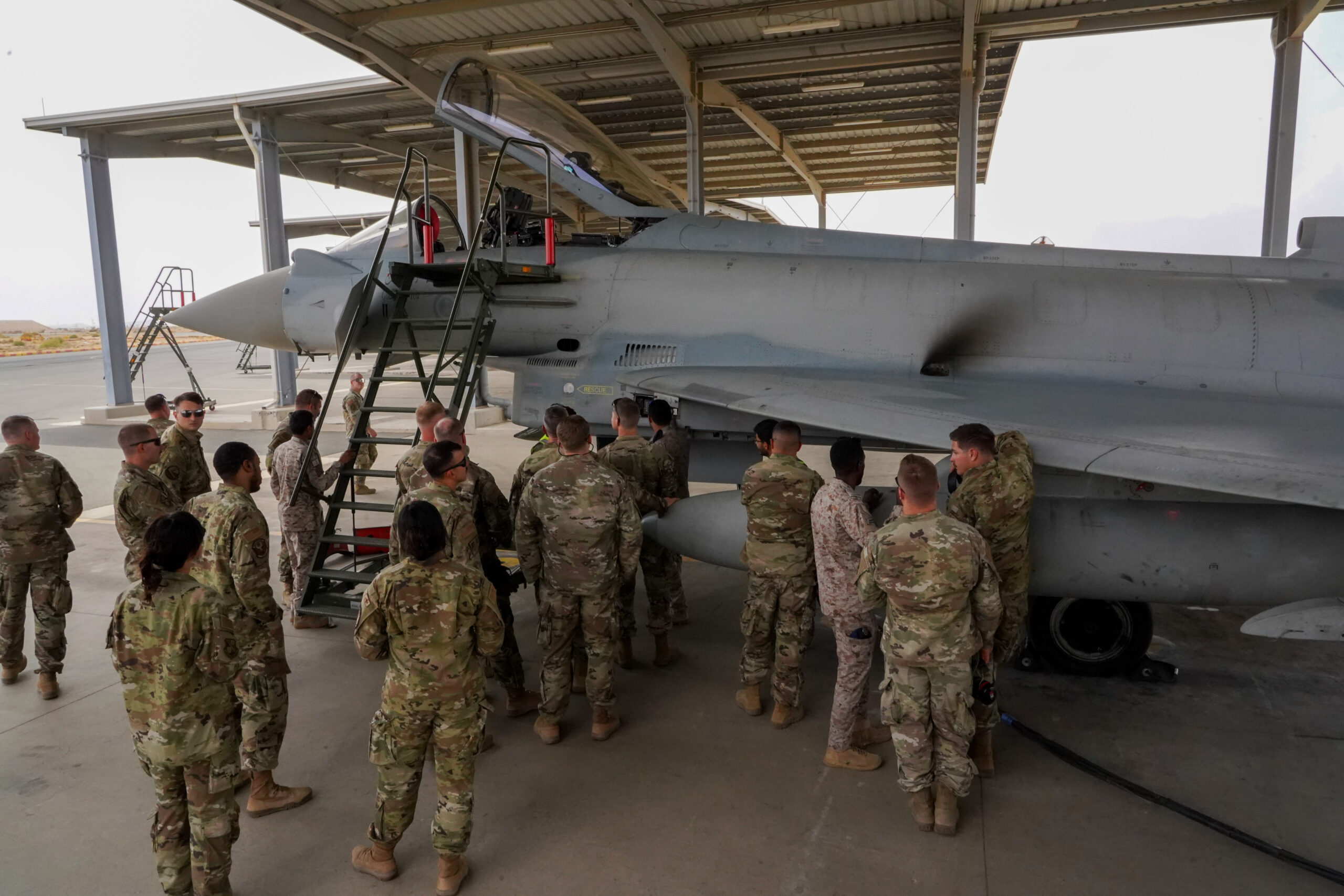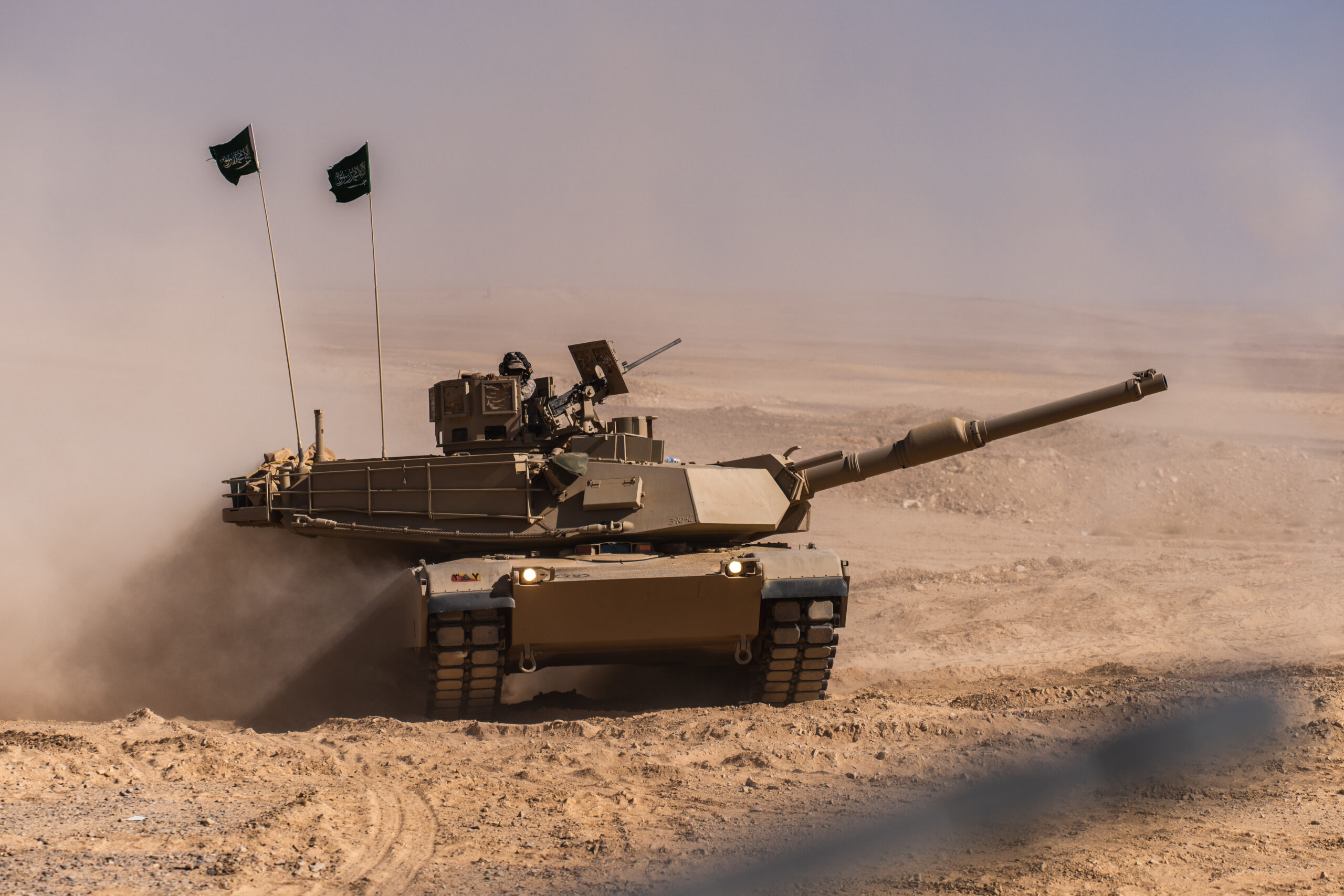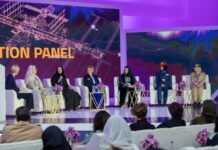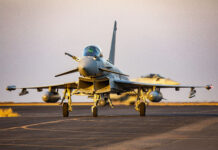The Kingdom of Saudi Arabia (KSA) is faced with an extremely challenging strategic environment in which previous strategic certainties no longer apply.
For years, the economic and defence links between Saudi Arabia and the US were such that they constituted an implicit guarantee of support from Washington in the event of the Kingdom facing a serious threat. Instead of being a guarantee of certainty, KSA–US relations are now far more complicated than ever before, and that leads the KSA towards new strategic thinking and a change in diplomatic emphasis to try and improve their strategic situation.
The main stumbling block is that the government in Riyadh disagrees with the current US Middle Eastern policy of largely avoiding confrontation with Iran over its continuing nuclear programme. From the outset, the Biden administration demonstrated a colder relations with KSA than previous administrations, though relations began to warm somewhat following the Russian invasion of Ukraine in February 2022. The key to this of course, lay in the issue of oil, with Saudi Arabia able to move oil markets by increasing or decreasing supply, and with the Russian oil and gas industry sanctioned, the US needed Saudi Arabia’s help to stabilise energy markets. At the time, Riyadh saw little need to respond to US requests; after all, high oil prices are rather attractive if you are an oil producing country. On the other hand, the KSA and other oil producers did assist in preventing the energy crisis that many feared following the sanctioning of Russia.
While relations between the KSA and US have recently shown signs of improvement, suspicion still remains in Riyadh regarding US intentions and the capacity of the Biden administration to cope with emerging crises in the region. How the future path of KSA–US relations evolve really depends on who wins the November 2024 US elections. Riyadh will therefore be closely following US domestic politics.
A conflicted region
Within the region, Qatar remains a concern for KSA. The country has plenty of ‘soft power’ tools allowing it to punch above its weight as it seeks to gain regional and global influence. From a Saudi perspective, the political lobbying muscle that Qatar has been able to generate and sustain in Washington remains a concern. This also applies to the US tendency to look to use Qatari ‘good offices’ when it wants to contact Hamas or the Taliban for example.
In Yemen, the Shia Islamist Houthi movement, known as Ansar Allah (Supporters of God), represent a major security challenge for the Saudis. The group are effectively an Iranian proxy, receiving substantial support from the regime in Tehran. Today, the Houthis dominate the western part of the country (including a substantial stretch of border with KSA). Since KSA’s March 2015 intervention in the Yemeni Civil War, Saudi Arabia has experienced attacks on its national territory by Houthi forces, with drone and missile strikes aimed at the Saudi oil industry and other high-value targets.
Since October 2023, the Houthis have targeted merchant shipping off the coast of Yemen in the Bab-el-Mandeb Strait and Red Sea, attacking a vital world trade artery leading to and from the Suez Canal. This has led the US, British, and others to deploy forces to the area to remove, or at least deter the Houthi threat comprising drones, missiles, cruise missiles and even ballistic missiles. The Houthi forces still have the ability to interdict maritime traffic, although there has been some effort to stop the supply of weapons to the Houthi by sea, and airstrikes have been launched against their missile launch positions.

Credit: US Navy/Specialist 2nd Class Michael H. Lehman
As far as the KSA is concerned, the Houthis have posed a consistent security threat for quite some time, and the Biden administration’s removal of the Houthis from the US list of foreign terrorist organisations soon after it took office in 2021 was an obvious annoyance to the Saudis. Now, after recent military operations against the Houthi, the US has once again placed the organisation on the ‘Specially Designated Global Terrorists List.’ The implications of this are less severe than being on the ‘Foreign Terrorist Organisations List,’ as it will not be a criminal offence for US nationals to support the Houthis. Moreover, the implications for the Houthis in being able to easily move funds around via the global financial system remain unclear.
Overall, the main Saudi strategic challenge remains Iran, as Tehran seems intent on becoming the dominant regional power. For its part, China has tried to broker a more relaxed level of diplomatic relations between Tehran and Riyadh, helped by the fact that it has strong commercial links with both states. This has led to some degree of improved diplomatic interaction, principally because neither Tehran nor Riyadh wish to see any escalation in tension that could lead to overt conflict. However, military action by Iranian surrogates against the Saudis, their allies or regional clients, can never be ruled out.
If we assume that Iran obtains a functional nuclear capability, then the security dilemma facing Saudi Arabia will be intense. Much will depend on who is the US president from January 2025 onwards and how the new administration intends to deal with Iran. That does not mean that the KSA will be out of strategic options, as there are plenty of possibilities it can explore.
For those who feel that it will somehow be possible to achieve a resolution of all of the disputes in the Middle East, this seems unlikely. The region remains divided by long-standing national, religious and ideological differences that cannot be easily bridged. The best that can be hoped for is that a measure of regional stability can endure.
Saudi airpower
The Royal Saudi Air Force (RSAF) does not wish to be totally dependent on a single foreign supplier for its primary combat aircraft systems. In an ideal world, it would be looking to continue its long-standing combat aircraft supplier-client relationship with the US and would hope to be working towards the supply of the Lockheed Martin F-35 Lightning II.
In the past, RSAF efforts to acquire top-of-the-line US equipment have been blocked by Israeli lobbying aimed at preventing the RSAF obtaining a high-end offensive capability that could be used against Israeli targets. This certainly complicated F-15 acquisition efforts in the past for example. However, relations between Saudi Arabia and Israel have significantly improved in recent years, especially since both are highly suspicious of Iran. It was felt that this situation might at some unspecified point in the future open the way to an F-35 acquisition. However, since the outbreak of the Israel-Gaza conflict in October 2023, overt links between Israel and the KSA remain in limbo, meaning that for the RSAF, the odds of acquiring F-35 appear low.

Credit: USAF
The decline in relations between the US and the KSA in recent years has put major combat aircraft purchases on hold, though there have been suggestions that the RSAF might be offered some form of evolved Boeing F-15EX solution as a logical capability expansion. The F-15 remains the most numerous combat aircraft in RSAF service as such they should be able to support additions to this force. However, it is doubtful whether the RSAF would wish to follow this path. Boeing remains a key supplier to the RSAF and would doubtless like to see the RSAF move forward on selecting the E-7 to replace its current E-3 AEW&C fleet, as this would certainly be a lucrative programme. In the meantime, the RSAF has acquired a couple of Saab GlobalEye AEW&C aircraft and has even apparently had talks with China regarding their KJ-200 AEW&C system. Should relations between the US and the KSA improve, then the possibilities for the E-7 might greatly improve.
The potential RSAF acquisition that has generated the most interest is the long-awaited addition to the fleet of 72 Eurofighter Typhoon aircraft. A tranche of 48 more Eurofighters was to be acquired to allow the survivors of the Tornado fleet to be retired. The RSAF had previously purchased the Tornado IDS and ADV from the UK under the Al Yamamah programme, reflecting their preference for combat aircraft supplier diversity. Al Yamamah reinforced the position of BAE Systems as one of the major suppliers to the KSA and set the scene for the later Typhoon acquisition.
The acquisition of an additional 48 Typhoons was supposed to have happened by now, based on original plans, but came to a grinding halt as the German government, citing human rights concerns, blocked the sale. This ban was lifted by the German government in January 2024, but in the meantime, talks between Paris and Riyadh on defence acquisition programmes had already begun to take place over 2023.
France has been a significant supplier to the Saudi military for years, but has never been able to open the way for Dassault to win a combat aircraft programme. In 2023, a serious opportunity emerged for Dassault to finally succeed in selling combat aircraft to the RSAF. Serious conversations took place regarding the acquisition of some 54 Rafale aircraft, which would have been accompanied by the acquisition of a major air weapons package of Rafale-specific air-to-air and air-to-ground systems. This would have resulted in a massive training and support package as well. By the middle of 2023, the Rafale acquisition was increasingly seen as an inevitability and talks continued late into the year. Bearing in mind the complexity of such a programme, this was obviously a time-consuming process.

Credit: Armée de l’Air et de l’Espace
Now, given the German government’s lifting of the ban on Eurofighter exports to KSA, Riyadh is faced with a bit of a dilemma, as they will have to take a decision on whether to acquire further Eurofighters, or the Rafale. This has future implications as well, since the Saudis are interested in becoming involved in the Global Combat Air Programme (GCAP) for a next generation combat aircraft involving the UK, Japan and Italy. There are clearly some difficult decisions for Riyadh to take, yet they are well positioned for some hard bargaining.
Land forces
The Royal Saudi Land Forces (RSLF) gained combat experience from their intervention in Yemen post-2015, and now the force faces serious decisions on how it shapes itself for the future. This depends on the type of conflict it expects to fight and the equipment it will need to prevail. The aviation element of the RSLF is certainly well positioned for the future, being equipped with the Boeing AH-64D Apache and the CH-47F Chinook, the Bell OH-58D and the Sikorsky UH-60L. Other parts of the RSLF are not so well provisioned, with lots of legacy equipment from multiple suppliers.

Credit: US Army
This is where local defence industry champion Saudi Arabia Military Industries (SAMI) could play a major role. It is official Saudi policy that 50% of national military expenditure is to be spent in the KSA by 2030. SAMI itself has the stated ambition of being one of the top 25 global defence companies. The company already produces ammunition, from small arms up to artillery calibres, truck and armoured vehicles, defence electronics and small arms. Rebuilding RSLF capabilities would certainly fit in with the transformational objectives of the KSA government to enhance local Saudi industry.
The Saudi Navy
The Royal Saudi Navy (RSN) has always been heavily influenced by the country’s geography. More specifically, the need to protect separate and lengthy coastlines has required the maintenance of two distinct fleets: a Western Fleet based at the Red Sea port of Jeddah and an Eastern Fleet headquartered at Al Jubail in the Persian Gulf. Despite the expense involved, the RSN has also typically been accorded a lower priority than the land and air-based arms of Saudi Arabia’s defence forces, which has limited the RSN’s aspirations. One consequence has been an excessive reliance on the country’s allies – particularly the United States – to ensure the country’s maritime security.
Until recently, the RSN has been comprised of warships of largely French and US origin. France has been the traditional supplier of choice for the Western Fleet; Naval Group delivered three sophisticated Al Riyadh air defence frigates early in the current millennium, where they joined an older quartet of French-built Madina class light frigates of 1980s vintage. Meanwhile, the Eastern Fleet is comprised largely of US-built missile armed corvettes and fast attack craft, also dating to the 1980s. These American ships were acquired under a large Saudi Naval Expansion Programme (SNEP) designed to counter growing Iranian naval power in the region.

Credit: US Navy
In recent years, a further recapitalisation of the RSN’s inventory has gathered momentum. Whilst this has partly been a reflection of the increasing age of many warships, it seems likely that lessons from the long conflict in Yemen have also been learned. The vulnerability of friendly shipping to asymmetric attack and the need to enhance capabilities to interdict enemy seaborne supply lines have both served to demonstrate the importance of the maritime domain. The resultant programme of naval investment is sometimes referred to as ‘SNEP II’.
By far the most important element of fleet renewal has been a growing strategic alliance with Spain’s Navantia. This alliance is currently focused on the delivery of five Avante 2200 corvettes under a EUR 1.8 billion contract announced in July 2018. The new ships are slightly enlarged variants of the quartet of Guaiquerí class offshore patrol vessels previously supplied to Venezuela. However, they have a significantly enhanced combat capability, including the provision of a Mk 41 VLS. The first three members of the resultant Al Jubail class were handed over in Spain between March and December 2022. Combat system integration of the final pair has been transferred to Saudi Arabia, where the fourth ship (named Jazan) was accepted on 5 December 2023. The programme will be completed with the delivery of the fifth and final corvette before the end of 2024.
This shift of final commissioning activities to Saudi Arabia reflects a broader plan that envisages the transfer of technology to allow the country to build its own vessels. This will be carried out under the framework of a joint venture between SAMI and the Spanish shipbuilder. It is also part of the wider ambition of localising defence spending in accordance with the tenets of ‘Saudi Vision 2030’. The Avante 2200 contract has already seen some tentative steps in this direction, for example through a joint development of the HAZEM combat management system. However, the new plans go much further, envisaging shared construction in Spain and Saudi Arabia. A memorandum of understanding covering the new arrangements was signed in November 2022 and it is ultimately expected to encompass completion of five multi-mission combatants.

Credit: Navantia
If ratified, the agreement will mark a significant step forward in the indigenisation of local naval shipbuilding and support. This has previously been limited to the assembly of much smaller and less-sophisticated vessels, most notably the completion of HSI-32 fast interceptors by the local Zamil Shipyards in collaboration with France’s CMN. However, it seems likely that both practical and political considerations will drive continued reliance on overseas shipyards for some time to come. One notable example is the acquisition of four Lockheed Martin-designed Multi-Mission Surface Combatant (MMSC) vessels being built at Fincantieri’s Marinette Marine shipyard to a variant of the Freedom class (LCS-1) littoral combat ship design. As well as helping to cement the Saudi–US alliance, these vessels are urgently needed to reinforce their ageing US-built predecessors in the Eastern Fleet.
It is interesting to speculate to what extent the current investment in the RSN fleet renewal will increase Saudi Arabia’s naval ambitions. Certainly, there have been recent signs that the RSN is willing to take a more prominent role in international maritime security operations across the region. However, the training and doctrinal hurdles inherent in developing meaningful ‘real world’ naval capabilities will be high.
David Saw and Conrad Waters










